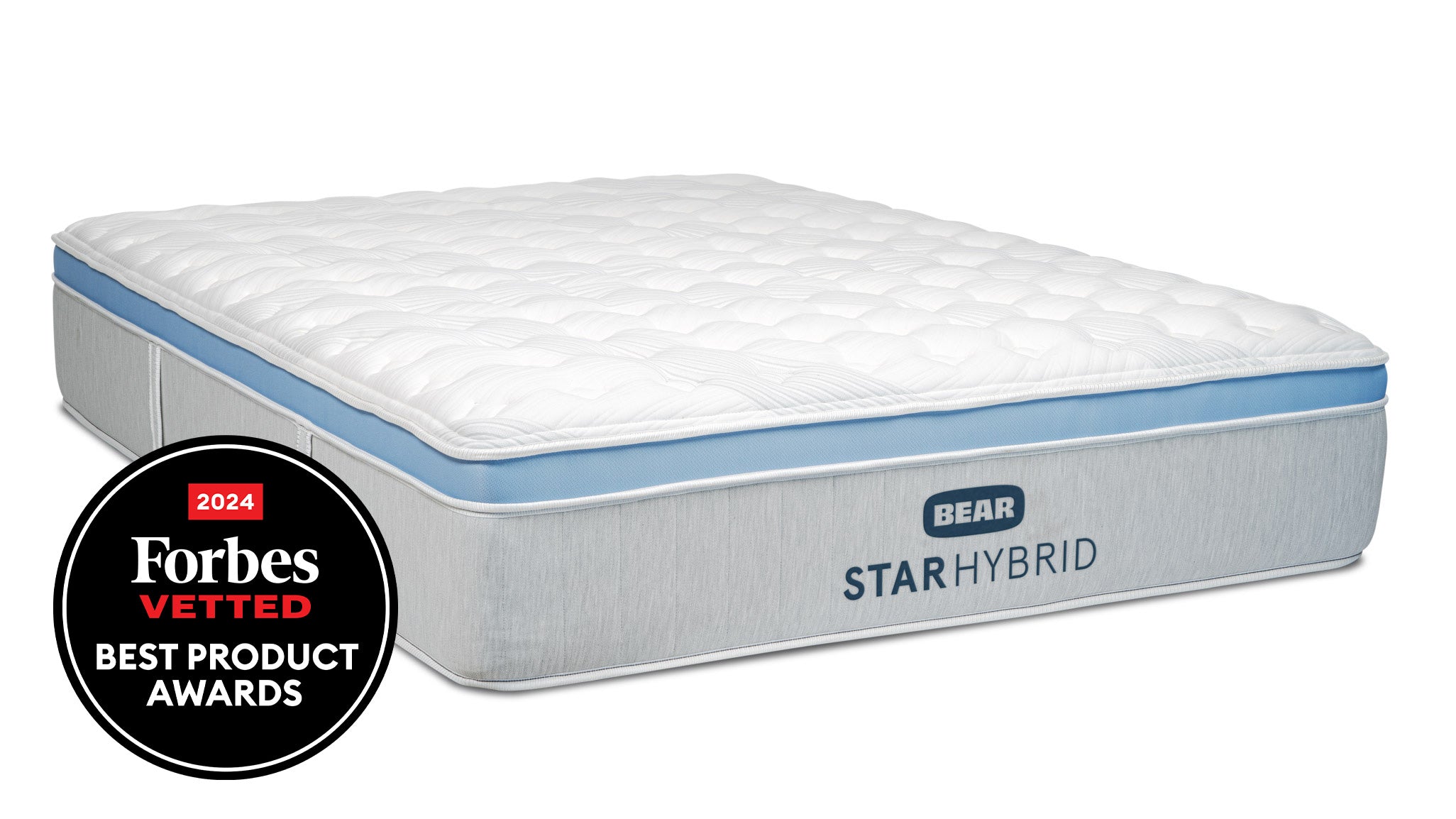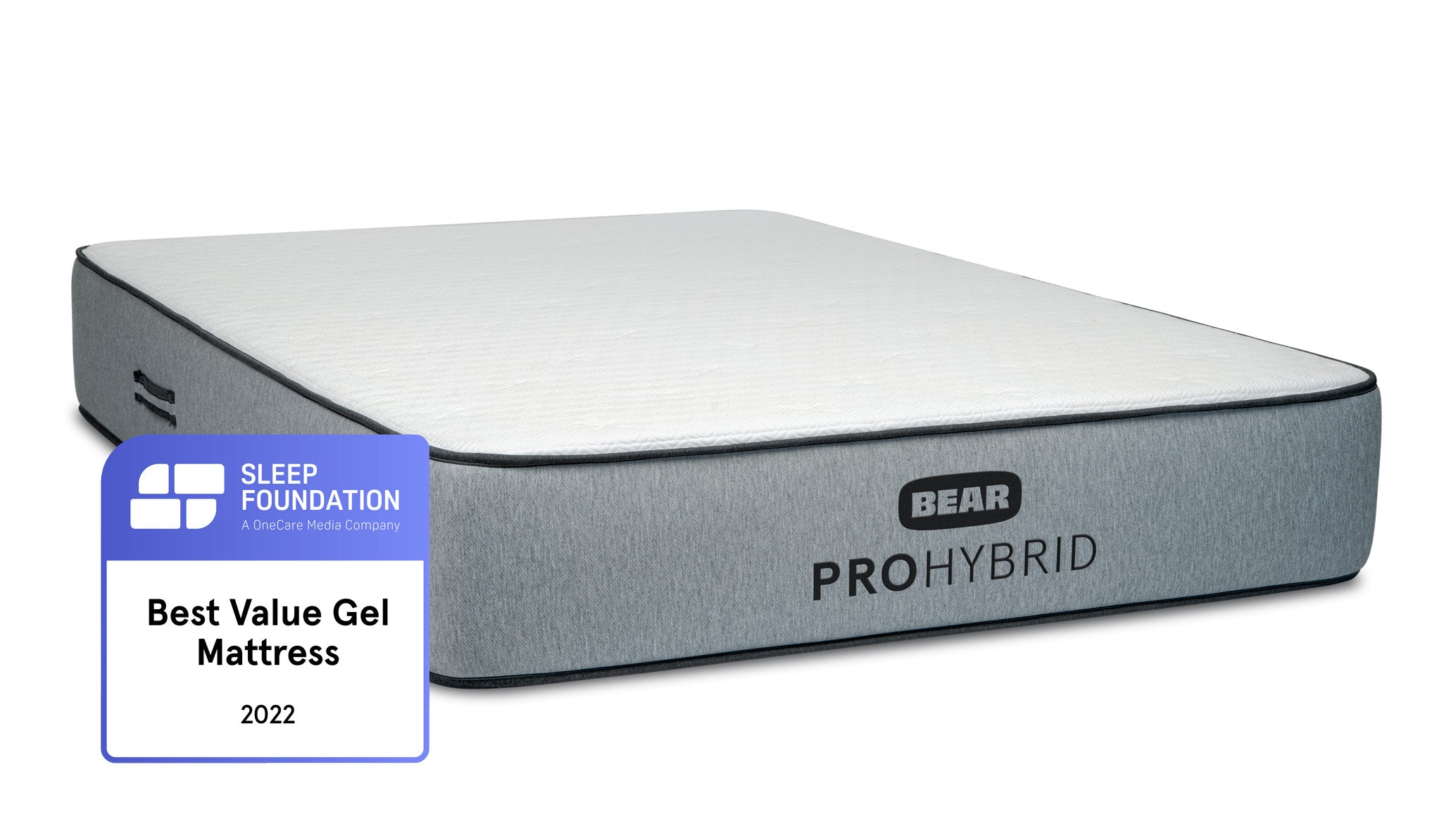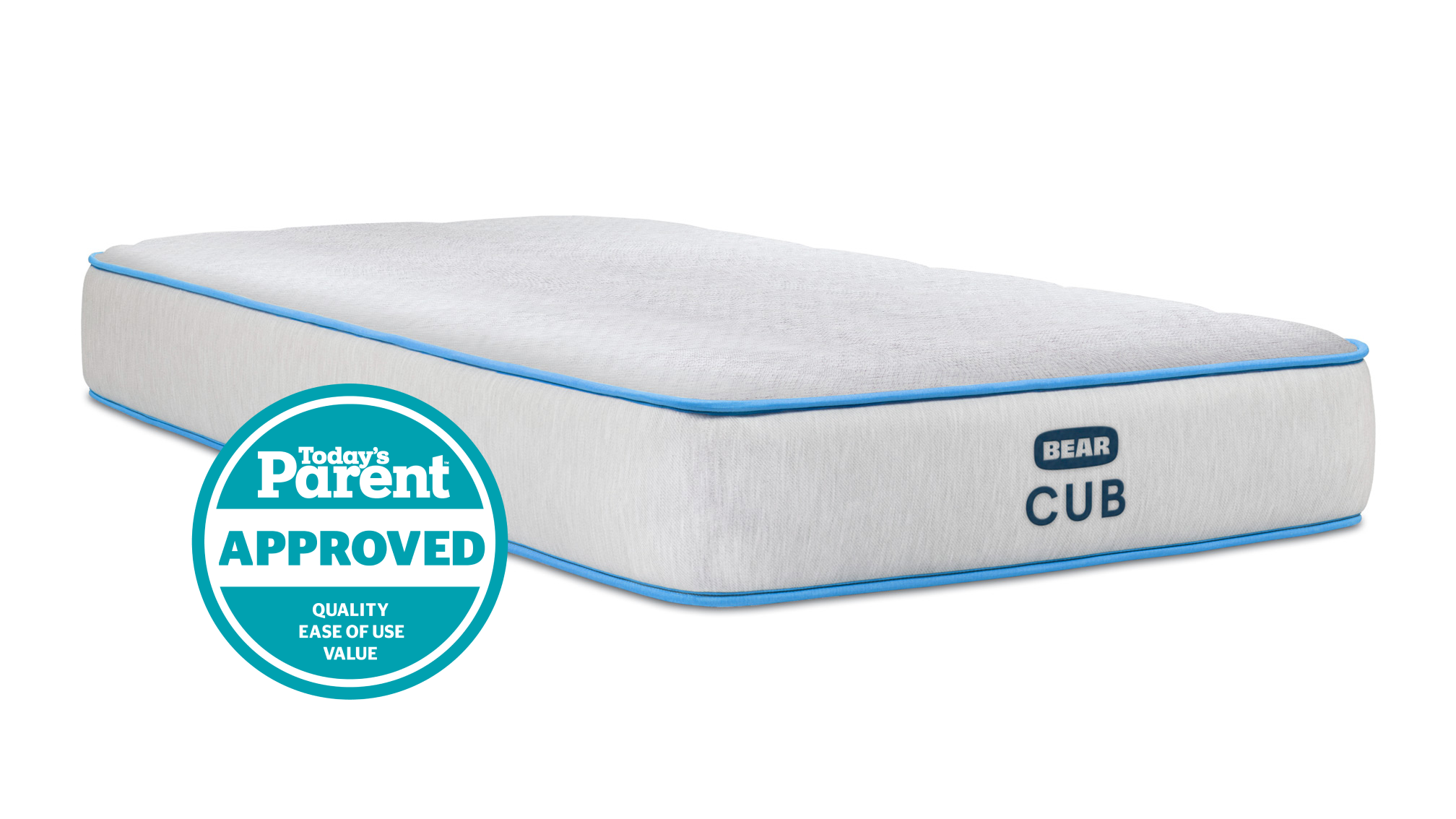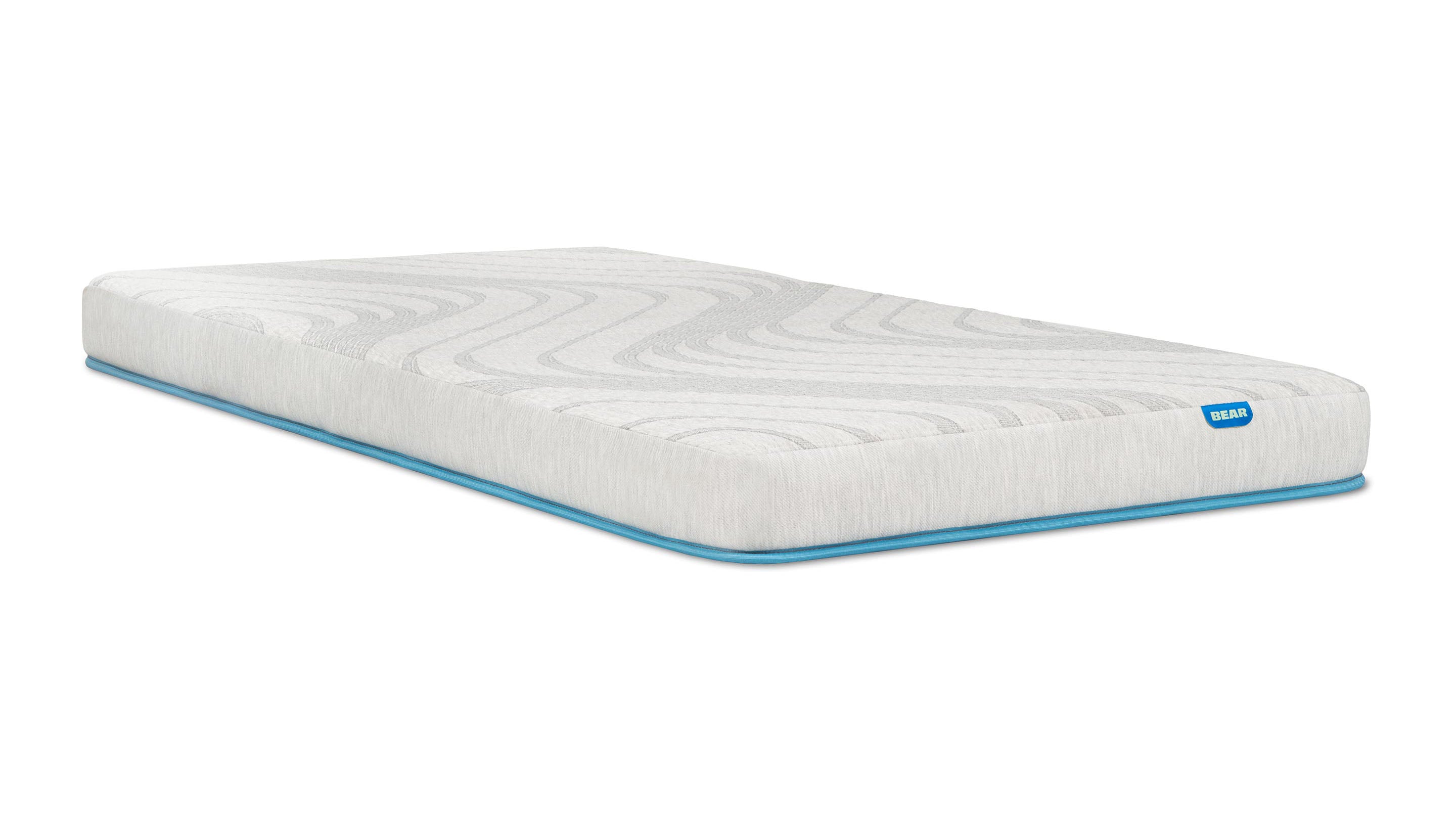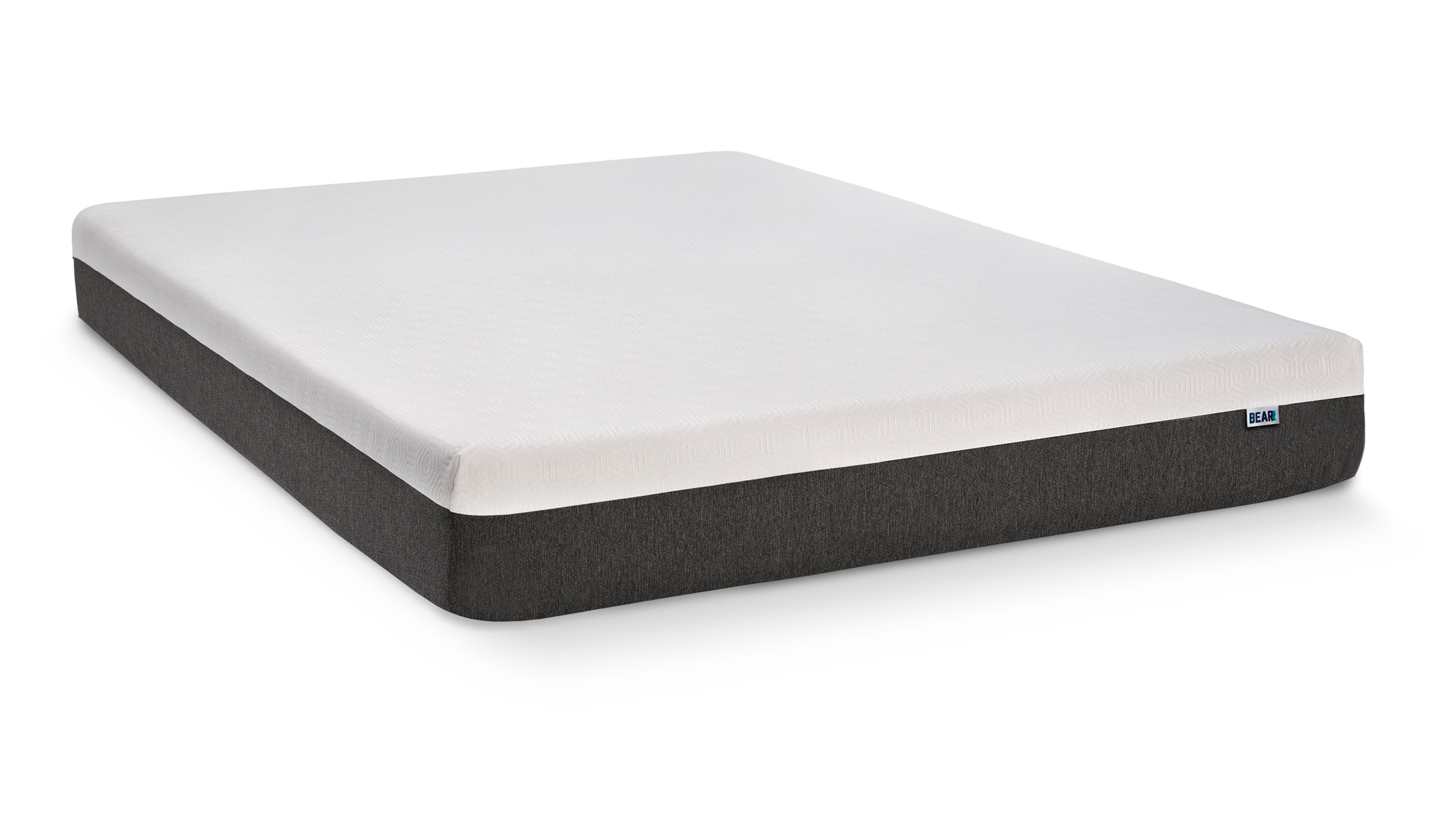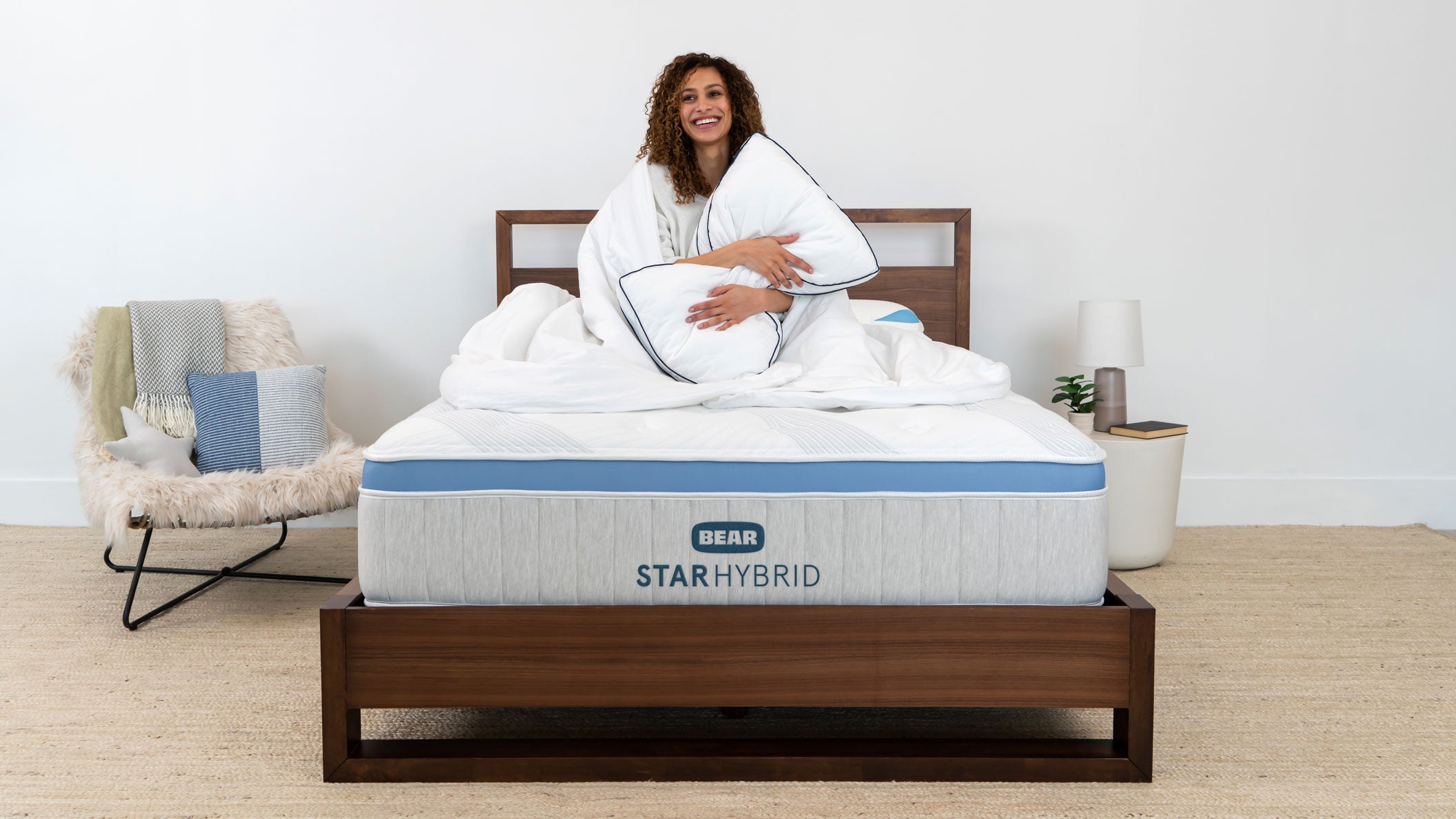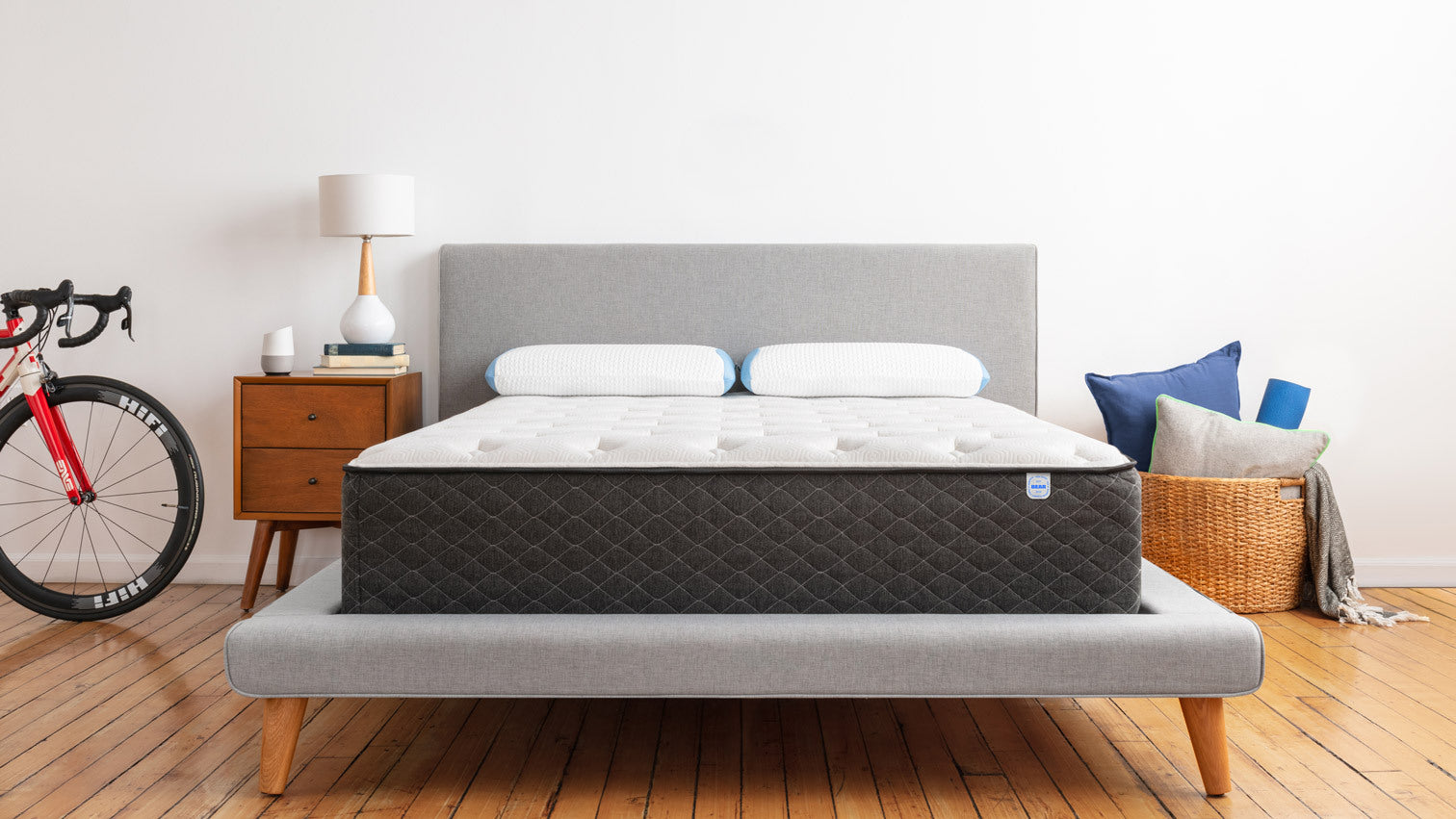The last thing any of us think about is what kind of spring is in our mattress — but maybe it’s time we do.
After all, a good night’s sleep is a top priority for anyone with a busy, active lifestyle, and having the right kind of mattress spring for your body can make a huge impact on sleep quality.
More often than not, you’re going to see two types of mattress springs on the market: encased-coil and innerspring. But what do these two words mean? And how do you know which one is better for your “Zzz time”?
The Traditional Innerspring Mattress
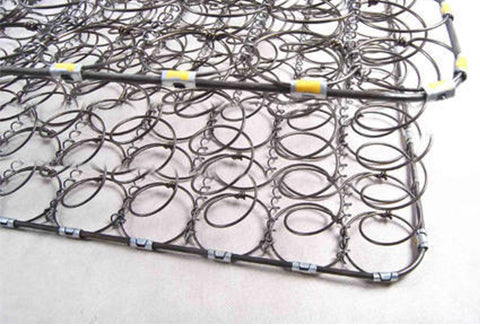
Imagine you’re in a cheap motel off of a major interstate, or maybe in your mom’s childhood bedroom at grandma and grandpa’s house. You go to sit down on the bed, and suddenly it squeaks, creaks and the whole mattress sinks to one side.
Well, that’s an innerspring mattress, and it’s probably what you usually think of when you imagine a typical mattress.
Innersprings are a more traditional type of mattress, consisting of a system of metal coils that are entirely interconnected to form a single unit. You may have also heard this type of spring system referred to as an “open coil” system.
The metal coils in an innerspring mattress are usually an hourglass shape — wider at the top and bottom, but thinner towards the middle. It’s the classic spring shape we can all imagine.
Because the innerspring coils are all connected, they have a tendency to all move as one. That’s why when you sit or lie down on an innerspring mattress, it feels like everything sinks to where you are.
So, Then What’s an Encased-Coil Mattress?
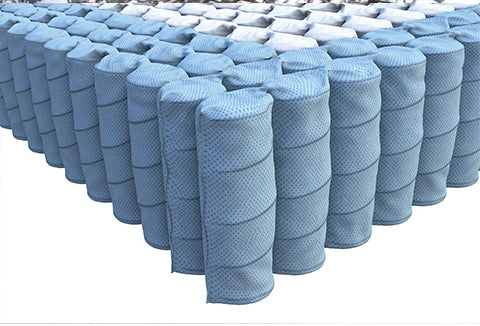
As the name suggests, an encased-coil mattress is made up of a number of metal coils or springs, each individually wrapped in a fabric “encasement” or sleeve. This type of spring support system is known by a number of names (encased spring, Marshall coil, etc.) and has become increasingly popular among sleepers.
But, if you think this type of mattress spring system is new — think again.
The encased-coil has actually been around since 1899 when a Canadian-born engineer named James Marshall invented this fabric-wrapped spring system (hence the name “Marshall coil” mentioned above).
The material of the spring itself may vary from manufacturer to manufacturer, but ultimately it’s the fabric sleeve that makes this type of mattress a total game (or sleep) changer.
The fabric sleeves in an encased-coil system allow the spring to act independently of one another, thereby minimizing movement across the mattress and creating an airy feel.
As for the actual metal coils, an encased-coil mattress will have cylindrical-shaped springs. Rather than narrowing in the middle like those of a traditional innerspring mattress, these encased coils will be uniform in width from top to bottom.
The Pros and Cons of Innerspring vs. Encased-Coil Mattresses
So, you probably have a pretty clear idea of the inner-workings of an innerspring vs. an encased-coil spring mattress. But what does it all mean for your body, your sleep time and your wallet?
Right off the bat, you can tell there are some pretty obvious structural differences between the two mattress types, and unsurprisingly, these variances have an impact on your overall wellbeing.
Innerspring Mattresses
At first glance, the benefit of buying an innerspring mattress would seem to be the upfront cost. True, they tend to be more immediately affordable than a memory foam mattress or even a hybrid mattress — but the appeal of paying less money up front on a traditional mattress might not seem like the best decision a few years down the road.
First of all, the weaker, thin points of the hourglass-shaped innerspring mattress coils tend to start breaking down earlier than a cylindrical coil. So even if you’re paying less money up front, you may have to upgrade your mattress sooner than you would with a memory foam, hybrid or encased-coil mattress.
Innerspring mattresses also aren’t necessarily the best option for your body — especially if you have any sort of chronic joint, muscle or back pain. Structurally, the interconnected spring system is simply unable to contour to your body and distribute weight evenly to relieve stress on your body’s pressure points.
And speaking of weight distribution: If you have a partner who’s a bit of a wild sleeper, you’re definitely going to feel them move around and hear the mattress squeak and creak. After a time, you will probably become accustomed to these disturbances and not notice them, but that doesn’t mean they aren’t messing with your sleep cycle.
Now, these downsides don’t mean you should throw your traditional mattress out the window (after all, some people probably love their innerspring mattress). But the innerspring coil system is certainly an example of how a widely used product isn’t necessarily ideal for everyone.
Encased-Coil Mattresses

On the other hand, encased-coil mattresses may cost slightly more than an innerspring depending on the manufacturer. However, this type of mattress has become more popular in recent years, so the price difference between the two types isn’t as large as it used to be.
Plus, in terms of return on investment, a mattress that incorporates encased-springs is going to be a much better, long-term deal. Not only does the cylindrical spring hold up better than the hourglass spring, but the encasement system also does wonders for your body.
Because each spring in an encased-coil mattress moves independently, the mattress has a much easier time contouring to the shape of your body. It also relieves a lot of pressure on areas like the back, neck, shoulders and hips that tend to give many of us the most trouble.
In fact, an encased-coil mattress’ springs can vary in degrees of tension depending on their location. For example, springs near the foot of the bed may be more responsive (i.e. squishy), whereas ones toward the middle of the bed might be firmer. In this sense, an encased-coil mattress can be more customizable than a traditional innerspring.
Similarly, the independence of the springs means you won’t feel your partner’s movement as much — if at all — resulting in a more peaceful sleep. Also, air flows smoothly between the standalone, sealed coils so your body won’t overheat during sleep.
Another great benefit of the encased-coil system is that it’s often used in hybrid mattresses (like the Elite Hybrid), which use a combination of foam and springs. The encased springs form a supportive base upon which top layers of various foams sit, creating an optimal design to accommodate different heights and weights.
Encased Coils: The Secret to Incredible Sleep
We all need sleep. Actually, most of us love to sleep — which is why we all deserve a mattress that makes sleep better, not worse.
Of course, everyone is going to have different tastes when it comes to the type of mattress they prefer. But if you’ve been less than pleased with your current mattress, you may want to give an encased-coil mattress a shot.

With its independent springs that minimize motion transfer and provide body pressure relief, encased-coil mattresses are a great option for almost anyone. Even lovers of memory foam or other foam mattresses can benefit from encased coils thanks to the many hybrid mattresses available today.
Overall, the encased-coil mattress delivers durable and dynamic support so you can get the best, most natural sleep possible.


